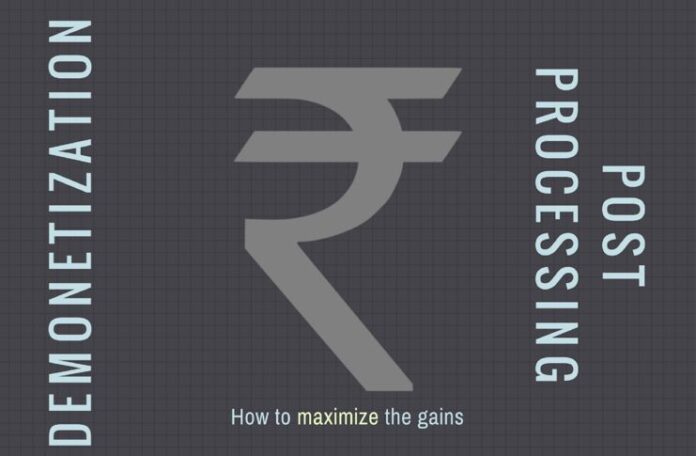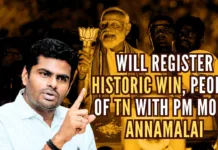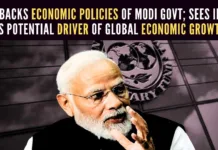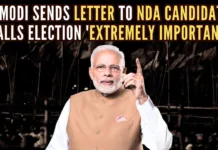
[dropcap color=”#008040″ boxed=”yes” boxed_radius=”8px” class=”” id=””]N[/dropcap]ow that demonetization phase is over and re-monetization is substantially under way, the Government should plan about how to maximise the gains of demonetization (apart from taking other important measures for detecting and punishing black money holders like acting against benami properties, unaccounted gold, cash & property abroad, etc, which is a topic for another discussion).
There are some who argue that the IT department has staff only to scrutinise about 3 lakh accounts.
PTI, quoting Government officials, has said that demonetised money (old Rs.1000 and 500) of Rs.2 lakhs ($3000) or over was deposited into over 60 lakh bank accounts, amounting to about 7.34 lakh crores ($108 billion) (averaging about Rs.12.5 lakhs ($18,000) per account), as has been widely reported in the media. A part of this is likely to be provable by the depositors as genuine right away, some of it will be black money which will be attempted to be explained as genuine (which will be contested by IT), and the rest unexplained black money. It appears that a small % of this will be unreturned money (we don’t yet know how much), and there have been no reports on the exact amount. So, the benefit to the Government should be the unreturned amount plus the IT, interest and penalty collected from out of the Rs.7.34 lakh crores (not counting the 25% amount kept as deposit on the unexplained deposit for 4 years as part of the penalty).
There are some who argue that the IT department has staff only to scrutinise about 3 lakh accounts. So, those who oppose demonetization argue that the Government won’t be able to identify and penalise the black money depositors; it’s like finding a needle from a haystack. They are wrong.
It’s true that scrutinising all the accounts with the available IT staff rigorously will take many years and hence not practical. And scraping only the top layer of suspect accounts for scrutiny will also let go of a very large number of tax evaders. So, the Government needs to come up with a creative, yet scientific (statistically sound) strategy to maximise the gains from demonetization with the limited human resources available. This article suggests a strategy the Government can adopt to minimise chances of the real black money holders (more surely the bigger ones) from escaping undetected and maximise the gains for the Government from demonetization.
[dropcap color=”#008040″ boxed=”yes” boxed_radius=”8px” class=”” id=””]T[/dropcap]he Government has to plug 2 major holes to maximize the gains of demonetization, yet ensuring that honest people are not put to much inconvenience nor subjected to inspector raj. I’m outlining here, a set of suggestions. There could be more such ideas, and the Government will do well to actively invite suggestions from the public quickly and start acting on them without losing time.
The Government may stipulate that all KYC-compliant deposits above a certain amount (say, an amount between Rs.1 to 2.5 lakhs, to be decided by the Government) made between November 9 and December 30, 2016 may be withdrawn only after giving a signed and notarised affidavit to the concerned banks
To start with, all these high value deposits may be reckoned suspect (but not necessarily black money) to be investigated. Some of the smaller deposits out of these could be by many innocent poor mules who may have deposited the black money of big tax evaders for a fee.
A simple step by the Government can help unearth at least some of these mule transactions and put black money depositors at huge risk of criminal prosecution. The Government may stipulate that all KYC-compliant deposits above a certain amount (say, an amount between Rs.1 to 2.5 lakhs, to be decided by the Government) made between November 9 and December 30, 2016 may be withdrawn only after giving a signed and notarised affidavit to the concerned banks within a stipulated time (of say, 3 months), through a simplified procedure. In the case of those who may have already withdrawn, they may be asked to give the affidavit post-facto within a stipulated date failing which they could be prosecuted/ the money confiscated. Non-KYC-compliant accounts above a certain amount of deposits may be allowed for withdrawal only after they become KYC-compliant. This will give a big legal handle to the Government, to start with, by converting civil to criminal cases, if black money holders are caught, and putting them at grave risk of criminal prosecution.
The affidavit should be to the effect that the money deposited in their bank accounts is money owned by themselves or by their close family members (naming them with their Aadhaar No), and not belonging to any others, and that they have not used any mules to deposit their own or their family members’ demonetised money into others’ bank accounts. They should also affirm that if their statement is wrong, they understand that they are liable for criminal prosecution. This will put fear in the minds of both the black money holders who used mules and the mules themselves. Those who disclose such mule transactions, even at this stage, could be let off with mere fine, without prosecution.
[dropcap color=”#008040″ boxed=”yes” boxed_radius=”8px” class=”” id=””]T[/dropcap]hough this may not, by itself, deter every offender from making false declarations, at least some of them would reveal the truth, or this action will at least enhance the ease of legally prosecuting them if caught. So, some % of the black money holders are likely to settle for peace on account, given the seriousness of the Government in tackling black money.
Some people will complain that the Government is unnecessarily harassing the common man; this is obviously not true.
To facilitate getting so many declarations from across the country, the IT department itself may send such forms to the banks for every such case and ask the banks to fill them up and get the account holders to sign them, and have them notarised (at the cost of the IT department); thus, the suspect account holders may even be freed from the hassle of making the affidavits, except for signing them.
Some people will complain that the Government is unnecessarily harassing the common man; this is obviously not true. The number of such affidavits will be only a maximum of 60 lakhs across India (- in reality much less), just 5 out of every 1000 Indians. This is only to ensure that criminals don’t escape the long arm of the law. Common man will welcome this, though some of the affected people may crib.
To avoid post-demonetization exercise leading to inspector raj harassing the honest among the suspects, the Government may automate the process of IT notices, replies and follow-ups, hiding the client contact details from the ITOs. Randomising the ITOs who send queries in respect of every suspect, and the ITOs who receive and handle the responses (who should be different from the ones who serve the notice) will be a way to substantially prevent inspector raj, corruption and wrongful harassment. This will force the ITOs to document their queries to the assessees meticulously, and not be vague, as they won’t be processing the responses but someone else will, and any laxity will show up at the next stage and during audit. This set of steps of automation & anonymity will relieve the available ITOs from routine processing work for more serious scrutiny work and pursuit of the cases that may arise, thereby enabling the available ITOs to scrutinise more cases.
[dropcap color=”#008040″ boxed=”yes” boxed_radius=”8px” class=”” id=””]O[/dropcap]ut of the 60 lakh demonetised money deposits of Rs.2 lakhs and above, applying Pareto Principle*, we see that about the top 12 lakh bank accounts are likely to account for about Rs.6 lakh crores ($88 billion) of the deposits. Out of these, the top 2.4 lakh accounts are likely to account for about Rs.4.8 lakh crore ($70.5 billion) of deposits (averaging about Rs.2 crore ($294,000) per account, though the top-liers of them could run into Rs.1000s of crores), again by Pareto Principle. (These %s may have been skewed due to laundering through mules, but broadly these or similar patterns are likely to be maintained.)
The Government has the necessary staff to focus on these cases rigorously, especially if they initially resort to automated anonymous processes of serving notices, getting responses and sending additional queries, if any.
And more depositors in this category are also likely to be black money because there’s not much justification for handling so much of cash. So, this should be the most important target group to focus on; let’s call this ‘Class A’ category. The Government has the necessary staff to focus on these cases rigorously, especially if they initially resort to automated anonymous processes of serving notices, getting responses and sending additional queries, if any.
The affidavits discussed above will be one level of deterrent, preventing people even in this category from falsifying their accounts to hide their black money, as these people are big fish and may more surely want to avoid imprisonment in the worst case, esp given the seriousness exhibited by the Government in tackling black money. At some stage, raids and face to face investigations may become necessary, for which the ITOs considered most honest could be deployed, with as much additional safeguards as possible to prevent subversion of the Government efforts.
[dropcap color=”#008040″ boxed=”yes” boxed_radius=”8px” class=”” id=””]T[/dropcap]he next 10 lakh (1 million) depositors are likely to account for about Rs.1.2 lakh crore ($17.6 billion) of such deposits (averaging about Rs.12 lakh per account). This should be a moderately important target group; let’s call this ‘Class B’ category. The Government doesn’t have the necessary staff to focus on these cases rigorously. The Government may adopt a strategy of moderate rigour to handle these cases. The affidavits discussed previously will surely be one level of deterrent. Initial automated anonymous processes of serving notices, getting responses and sending additional queries will help ease the process, but the Government may use ‘carrot and stick’ policy with them. If required, the Government can even decide to take up only a certain large % of the cases for scrutiny (say 25%) which will still obviate the need for scrutinising 7.5 lakh cases in detail. This % is high enough to put fear into the minds of black money holders to avoid criminal proceedings and come clean. In any case, even those not scrutinised are part of the watch list of the Government as they were suspects, to start with, and have not been cleared.
Once the rest of business, industry and professionals fall in line, these people are likely to become honest tax payers as well.
The balance 48 lakh depositors are likely to account for about Rs.1.34 lakh crore ($19.7 billion) of such deposits (averaging about Rs.3 lakh per account). This should be the least important target group; let’s call this ‘Class C’ category. The Government surely doesn’t have the necessary staff to handle all these cases. The affidavits discussed here will again be one level of deterrent, as false declaration could lead to prosecution, for a small perceived loss of money. Initial automated anonymous processes of serving notices, getting responses and sending additional queries will help ease the initial process here also. The Government may use random scrutiny policy to handle the cases of responses to ITO queries which appear suspect, and close the cases without wasting time and effort, following a strategy of low rigour. If cases taken from this category are 5%, 45 lakh cases (75% of the total cases) don’t have to be handled.
One issue that is likely to come up still is the lakhs of court cases that may arise. In respect of Class B and C cases, most of the suspects may be professionals, small traders and MSME industry who may have evaded taxes not because they may have wanted to cheat the Government but because doing so has become the norm in their profession, business or industry, and if they didn’t do the same, they would have lost out competitively against their peers. Yet, the Government has a need to penalise them monetarily if only to respect the other honest taxpayers.
Once the rest of business, industry and professionals fall in line, these people are likely to become honest tax payers as well. The Government may, in their cases, explore less time-consuming, conciliatory legal processes like Arbitration & Conciliation. The advantage of this approach is that these people would hopefully become fully tax-compliant from the next year onwards. And even those who escaped scrutiny may become tax-compliant as they know they could be scrutinised in the subsequent years. And the Government doesn’t have the bandwidth to fight them all legally anyway.
[dropcap color=”#008040″ boxed=”yes” boxed_radius=”8px” class=”” id=””]S[/dropcap]ince a series of steps have been suggested here that will reduce the contestants of IT scrutiny substantially, another set of steps have been suggested that will automate & anonymize the early scrutiny process, yet another set of steps have been suggested that will cut down phenomenally on the number of low value cases taken up for scrutiny, and still another set of steps that will resort to simpler Arbitration & Conciliation process, the bandwidth of the ITOs to handle cases will increase, and they should be able to handle the cases taken up with the available human resources. And yet, since we have used A-B-C classification & prioritization of the accounts, the efficiency of the system is very high, thus maximising the gains to the Government. If there is a shortfall of staff still, the Government can resort to extra-ordinary methods like recalling retired staff temporarily, outsourcing non-critical part of the process (without compromising on privacy by hiding individual identifications), etc.
Not only will the Government be able to detect at least some of the dishonest people laundering the demonetised currency, since they are criminal in their intent, these people could also be investigated for their past misdeeds and potential future misdeeds…
In respect of mules, the Government may reward the approvers among them, and penalise those who don’t cooperate, but it should prosecute the black money holders who deployed the mules.
In any case, the taxes the Government is likely to realise, year after year, from all these operations will be of the order of lakhs of crores of Rupees, once a case history of high income is established in respect of each of the black money holders. The cumulative value of these additional tax collections from them over the years will be huge, dwarfing the cost of the demonetization exercise, which critics keep harping about. And when GST is implemented, GST tax collections will be high, being free of holes.
Those whose cases are settled and who start paying up their due taxes after having gone through the above processes become clean. The others (the dishonest ones who feel that the Government won’t be able to detect their misdeeds from the crores of data; even if caught) may want to fight the Government legally, expecting to exploit our weak legal system. They are the ones who would crib about ‘Inspector Raj’. Even if they succeed legally, the Government would have identified them, as strong suspects from the significant deposits of old notes they would have made in their bank accounts (more than Rs.2.5 lakhs to 1000s of crores.
Not only will the Government be able to detect at least some of the dishonest people laundering the demonetised currency, since they are criminal in their intent, these people could also be investigated for their past misdeeds and potential future misdeeds in every way (like accumulating black money in other forms like real estate, gold, foreign bank accounts/ property holdings, and other wrongdoings like hawala, money laundering, etc) using raids, big data analytics, etc. The Government may keep a vigil over these people forever, and try to bring them to book in every possible way, to get them to pay for their past and future sins. So, the Government can make it difficult for people to hold on to existing black money and create new black money.
Hence, post-demonetization, the Government has the resources to defeat the designs of black money holders and make the economy substantially cleaner than it was before November 9, 2016.
* Note: Pareto Principle, also called 80:20 Rule, states that in typical systems following normal distribution, roughly 80% of the effects come from 20% of the causes. In our context, this means, the top 20% of the bank accounts are likely to have 80% of the deposits by value.
Note:
1. The conversion rate used in this article is 1 USD = 68.11 Rupees.
2. Text in Blue points to additional data on the topic.
3. The views expressed here are those of the author and do not necessarily represent or reflect the views of PGurus.
- How BJP can get 33%+ vote share in TN - April 1, 2024
- A transparent, equitable electoral funding alternative - March 19, 2024
- How TN BJP can come to No. 1 or No. 2 in 2024 LS polls - January 11, 2024











The article in the link below may interest some of the readers:
HOW TO RESPOND TO NOTICE FOR CASH DEPOSITED 9.11.2016 TO 30.12.2016
http://www.simpletaxindia.net/2017/02/how-respond–notice-cash-deposited-09.11.16-to-30.12.16.html#ixzz4XdxZsaVK
Very useful article. Hope the govt’s attention is drawn to this article. Having started a very difficult exercise that was supported by most people in the country despite all the hardships they have thru, it is very important that the Govt is transparent about the costs and benefits of this exercise in a progressive manner and carries thru the rest of the processes like identifti and bringing within the tax net those black monies .
Thanks for your efforts in providing constructive suggestions to the govt instead of just praising or criticising like a spectator.
Your suggestions must be put into effect with a smaller surgical strike without much loss of time/ manipulation time.Otherwise trails will turn cold.
Kindly elucidate ” The Gains of Demonetization” first. With RBI itself being unable to provide figures, your article makes no sense.
Please read this article:
https://www.pgurus.com/demonetisation-success-or-failure/